Tsipova Monastery
On Saturday I took my first excursion out of Chisinau. Armando, an advisor
on our project who comes from Peru,
and I recruited one of the interpreters' cousins (Ghenadie) to drive and his
wife (Daniella) to interpret.
The day dawned cold and foggy. The temperature was just above freezing and
the dampness . We had an excellent road for the first hour, then turned on a
side road with many large pot-holes so we had to slow down. The last twenty
minutes we followed a dirt road so Ghienadi nursed his Opal along.
We arrived in the Tsipova Monastery parking lot and discovered two groups of
tourists had already arrived, one on a city bus and the other in a micro-bus.
Outside the church was a well (still dry) being dug very slowly, as workers
hauled up the dirt one bucket load at a time.
|
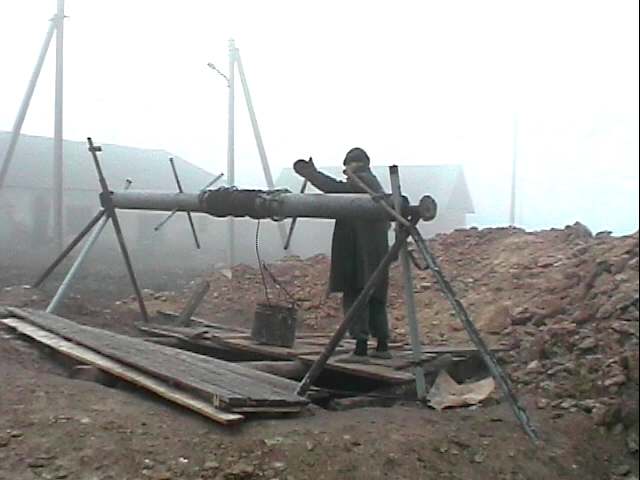
|
|
Slowly Digging
a Well
|
Calugar (Monk) Policarp greeted us and showed us the church
that was built in 1776. He explained that it was used as a church until 1954
when the government decided that an orphanage should use it as a garage and
warehouse. Now they are working to restore it. They are painting the walls
with designs but I do not think they have done research into authentic old
frescoes.
|
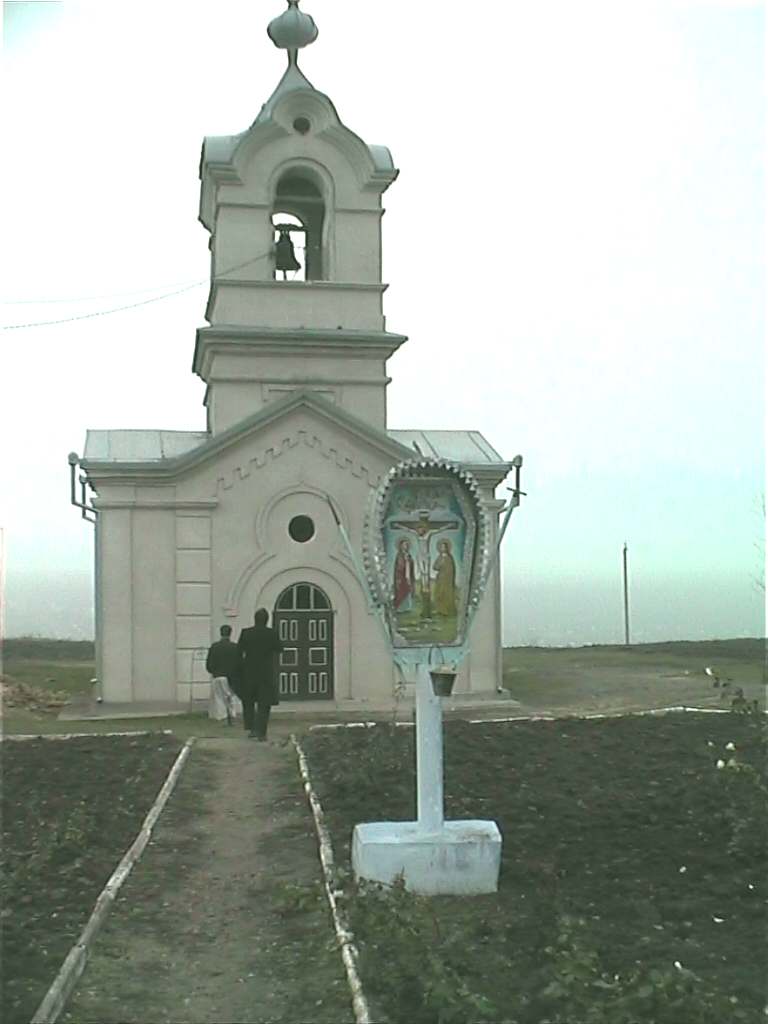
|
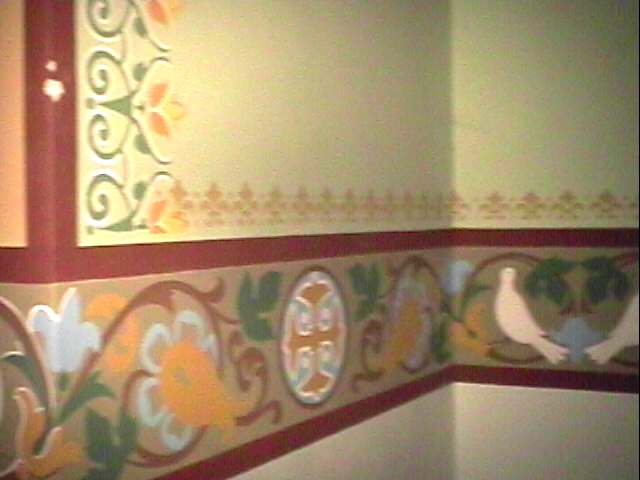
|
|
Calugar
(Monk) Policarp
|
Freshly
Painted Church
|
Then the monk lead us down a steep path towards the old
monastery.
|

|
|
River
Nistru
|
We walked slowly down the path for ten minutes until
we saw rooms that had been carved into caves.
He explained that archaeologists had discovered relics in the caves
dating from the twelfth century BC. During the thirteenth century AD the
caves were first used as a monastery. Over time they expanded the complex
until they had rooms for a hundred monks and a hotel for numerous
visitors. There was a chapel in one of the caves. In others were kitchens
and bathing rooms. In all there were twelve levels of caves in the
cliffs.
|
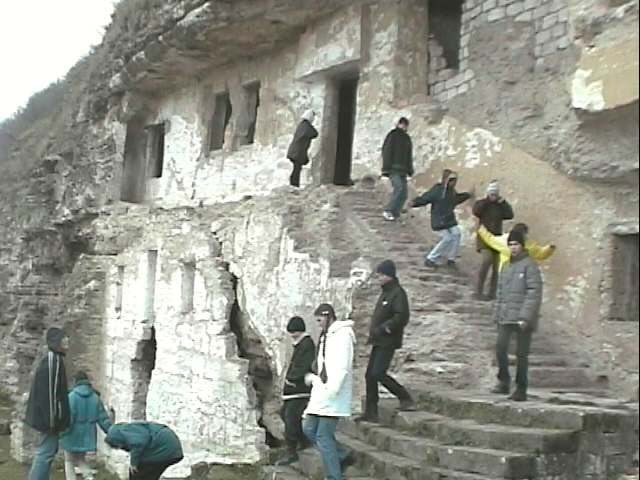
|
|
School
Group Touring
Monastery Caves
|
He told us that there were many stories associated
with these caves and that it was difficult to separate facts from
myths. He showed us the place where human sacrifices were believed to have
been made to the God Zeus. He told us that many people believe that Moldova's
patron saint Stefan Cel Mare (The Great) was also put to death here.
After he completed his tour we decided to hike down to the Nistru
River, Moldova's largest. Across the river was the break-away province
Transdniester and a large town. We heard constant barking of dogs.
We had been told that there was a waterfall (they called it a
"cascade") not far away, so we started hiking up the river,
then up a very small tributary. Occasionally we saw shepherds who
assured us that we were going the right direction and that it was not
far. Nearly an hour later we found ourselves in a small canyon where a
thirty-foot waterfall roared into a large pool. If the temperature had
been fifty degrees higher I would have been tempted to take a shower.
Instead we took pictures and started back as it was almost 3:00 and we had not eaten any lunch.
|
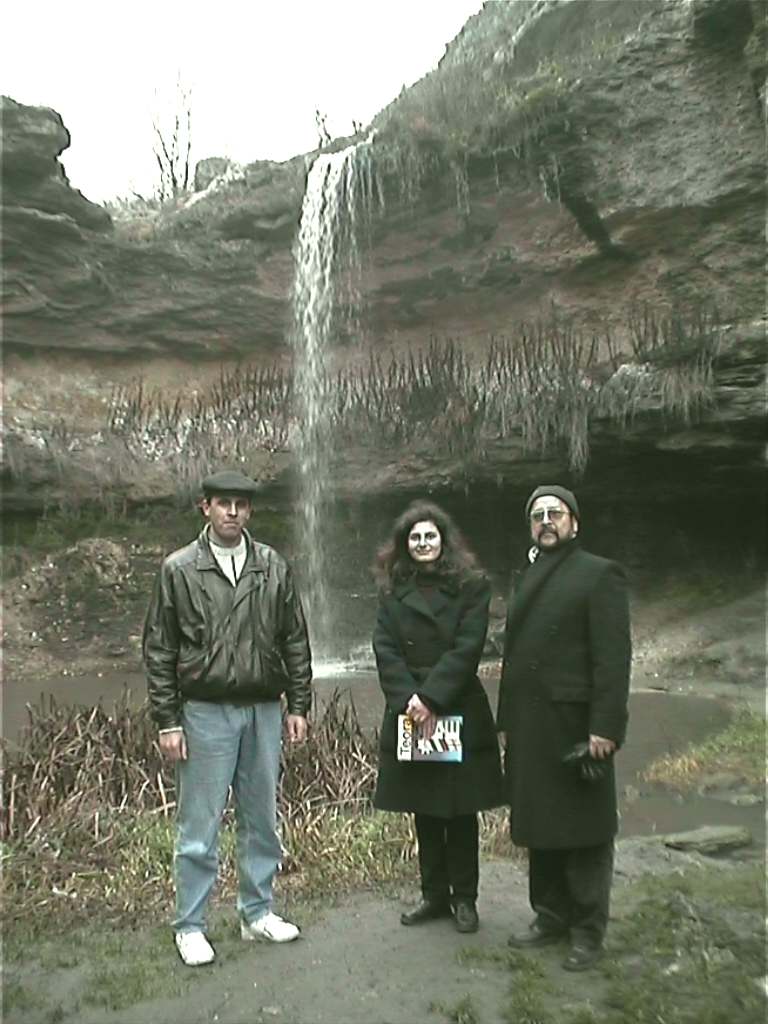
|
|
Driver,
Interpreter and Armando
Admire the Waterfall
|
Fortunately there was a shortcut back to the
chapel where we had parked. We bought a few icons and made a
contribution for the monastery. We ate apples and cookies in the car
and discovered that the only shop in the village would reopen in
twenty minutes. We decided not to wait and I napped during much of
the drive back to Chisinau.
|
|
|
|
|





